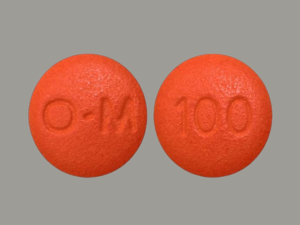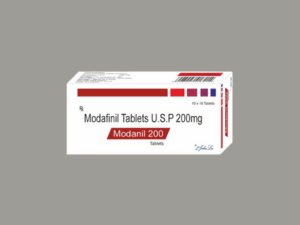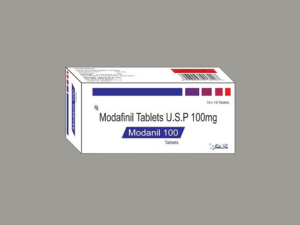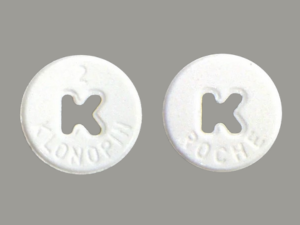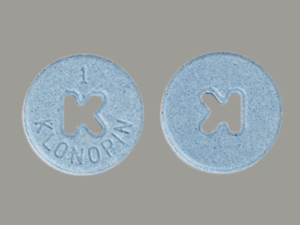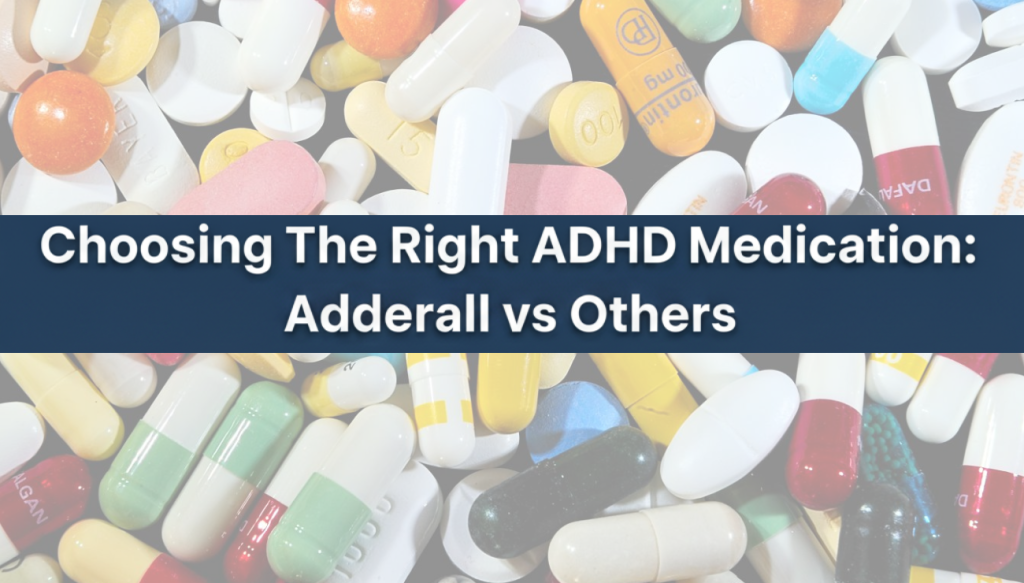
Choosing The Right ADHD Medication Adderall vs Others
The Right ADHD Medication may become one of the truly life-changing tools, the key, which opens the full potential of a person and transforms everyday troubles into new challenges. In the case of an Attention-Deficit/Hyperactivity Disorder (ADHD) patient, it is not as easy as simply grabbing the first recognizable brand, such as Adderall, but a well-informed process of discovery with a medical practitioner. It is an experience where due care is taken to various categories of drugs, personal body chemistry, and life requirements.
Table of Contents
Getting to know the Landscape: Stimulants vs. Non-Stimulants.
The action of ADHD medications is mainly through the modulation of the concentration of important neurotransmitters in the brain- Dopamine and Norepinephrine that play critical roles in determining attention, impulse control and executive functioning. The choices can be divided into two broad groups, namely stimulants and non-stimulants.
Stimulant Drugs: The initial Therapeutic Approach.
The stimulants are the first line of treatment because they are highly effective, and the research indicates that about 70-80 percent of patients with ADHD are affected positively. They are fast acting (usually a 30-60 minute acting period) by increasing the levels of Dopamine and Norepinephrine. Nevertheless, under the stimulant family, we have two different families:
Amphetamine-Based Stimulants (The Adderall Family)
This category consists of such drugs as Adderall (amphhetamine salts mixed), Vyvanse (lisdexamfetamine), and Dexedrine. Mechanism of Action:
Mechanism of Action: Amphetamines do not only prevent the reimbursement of dopamine and norepinephrine (leaving them longer in the brain), but also actively enhance the release of these substances into the storage.
Professional Advantages: It has been observed that they are characterized with a powerful, lasting effect, which makes them attractive to most adults and teenagers who have long working hours or complicated schedules. Formulations like Adderall XR or Mydayis, which are extended release formulations, may provide up to 12-16 hours of coverage during the day. Specifically, Vyvanse is a prodrug, and this implies that the medication must undergo metabolic processes to be active, reducing its abuse capacity and giving it an exceptionally easy and long-lasting effect with a minimal risk of an apparent crash.
Ideal For: Patients who require a strong, full-day symptom control, and those that prefer only one pill daily and who are reacting well to the Amphetamine molecule.
Methamphetamine-Based Stimulants (Relatives of Ritalin).
Such drugs as Ritalin, Concerta, Daytrana, and Focalin belong to this category.
Their action: Methylphenidate acts mainly by inhibiting Dopamine and Norepinephrine uptake.
Important Advantages: These usually are less harsh in their onset than amphetamine-based drugs and tend to be the initial drug tried, particularly in children and adolescents. They are available as both short-acting (Ritalin) and extended-release (which provides up to 12 hours of cover, Concerta). This diversity makes it possible to achieve amazing flexibility; short-acting varieties are very flexible in terms of dosing, and there is a delayed-release type of medicine, Jornay PM, which is taken at bedtime and can be activated early in the morning to achieve a disorganized morning schedule and lack of attention directly upon waking up.
Perfect Fit: Someone who might be susceptible to the performance of amphetamines, who does not want to take a stronger dose, or who needs to be able to adjust a dose to fit school or work hours only.
Non-Stimulant Drugs: A Good Alternative.
Non-stimulants can be a fantastic safe alternative towards the right direction, especially to those individuals who do not respond appropriately to stimulants, or those individuals who have other mental problems, sleep disturbances, or substance abuse.
Their mode of action: It may require weeks (3-4 weeks) to achieve their full therapeutic effect, however, they can also be effective in some individuals and have 24 hour symptom coverage. They basically act by raising the levels of Norepinephrine in the brain.
Key Options:
Atomoxetine (Strattera): the initial non-stimulant to be used in the treatment of ADHD, it does not show peaks and dales, and is especially useful when the patient has co-morbid conditions of anxiety or depression.
Alpha-2 Agonists (Guanfacine/Intuniv and Clonidine/Kapvay): These may be useful in the treatment of hyperactivity, impulsivity, as well as disruptive behaviors. They can be used as a useful combination treatment to assist the treatment of tics or counteract stimulant-induced insomnia.
Best For: patients with comorbid anxiety, tics, or history of substance abuse, or who develop unacceptable side effects of stimulants (such as insomnia or loss of appetite).
Finding Your ‘Right Fit’: A Teamwork Process.
The title The Right ADHD Medication does not refer to one pill, but to the individualized approach to treatment. It can be found by collaborating with your medical professional, a psychiatrist or expert. It requires time; it is known as titration, the process of gradual accommodating to the best dose and drug that manages your symptoms but not your side-effects.
Factors Which Inform the Decision:
Your Symptom Profile: Have you been struggling with atattention, hyperactivity, or emotional regulation problems as your core struggles? The various drugs can address these areas with different levels of effectiveness.
Co-morbidities: Anxiety, depression or sleep disturbances play a significant role in influencing the decision. Non-stimulants are commonly preferred in cases where there is more anxiety because stimulants in some cases are found to aggravate it.
Your Daily Routine: Are you covered with the usual 8-hour working day, or do you have evening duties which need 16 or more hours of concentration? This defines which is better to use: short-acting, long-acting, or ultra-long-acting formula (such as Mydayis).
Tolerance and Side Effects: Ultimate is the response of the body. Should Adderall have an excessive amount of crash, an alternative Amphetamine-contained medication such as Vyvanse or an alternate to Methylphenidate-based drug such as Concerta could prove to be something more appropriate. Such side effects as decreased appetite or insomnia can be easily controlled by changing the dose or the time of the medication intake.
Cost and Availability: In cases of drug shortage, particularly during the period of medication shortage, taking the option of generic or other alternative drugs would be a sensible change. It is important to communicate with your pharmacy and provider freely to keep up with them.
It is not the eventual aim of medication to make you an alternative person, but to eliminate the obstacle to your thinking produced by neurological means. Many other people complain that with the appropriate drug, they feel better not just better in terms of concentration.
Final Analysis: The Strength of an Informed Decision.
The Right ADHD Medication is a very personalized therapy, which is a product of patience, observation and clinical direction. Although Adderall is a very strong and highly effective stimulant, it is by no means the only and the best one. The success is in the true knowledge of the unique features of the Amphetamine family (such as Adderall and Vyvanse), Methylphenidate family (such as Ritalin and Concerta), and the particular benefits of non-stimulants.

